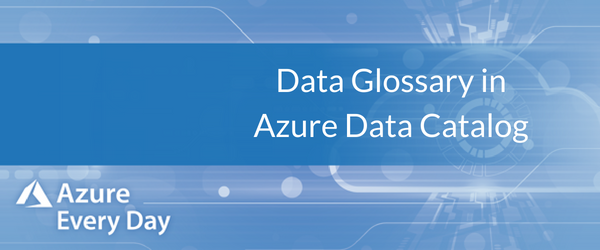 If you’re just getting started with the Azure Data Catalog, today I’ll talk about the Data Glossary that’s available within that catalog. The terms glossary and catalog may get interchanged, so I’d like to clear this up a bit.
If you’re just getting started with the Azure Data Catalog, today I’ll talk about the Data Glossary that’s available within that catalog. The terms glossary and catalog may get interchanged, so I’d like to clear this up a bit.
The data glossary is a feature inside the catalog, so you don’t need the glossary to get started with the catalog. In fact, the glossary is not available in the free version of the catalog, only in the paid for standard version, but it’s a good way to put more content around your data for your catalog users.
The best way to get started with the catalog is by registering some data assets in your catalog. Then you can use the data glossary to put some definition around terms that can be used as tags. The person creating the entry in the data catalog can create a tag, but that tag doesn’t have any additional metadata behind it.
The data glossary allows you to define more detail about a term and then that term can be used as a tag. So now if you add an asset to your data catalog, you tag it with a glossary term and then people viewing the catalog can just hover over that tag and get a tooltip with a lot of metadata, possibly a business definition that has been input by a SME within your organization for example.
A great way to add more content in your catalog for your users. I hope this was helpful in defining the difference between the glossary and the catalog. If you have questions about the Azure Data Catalog, data architecture in Azure or anything Azure related, you’re in the right place. Click the link below or contact us—we’re here to help.
Don't forget to check out the Pragmatic Works' on-demand learning platform for more insightful content and training sessions on Power BI, Power Apps, Power Automate, Copilot Studio, Fabric, Azure and other Microsoft applications. Be sure to subscribe to the Pragmatic Works YouTube channel to stay up-to-date on the latest tips and tricks.
It's also easy to get started with your 7-day free trial. Just click below and you'll be on your way.


-1.png)
Leave a comment